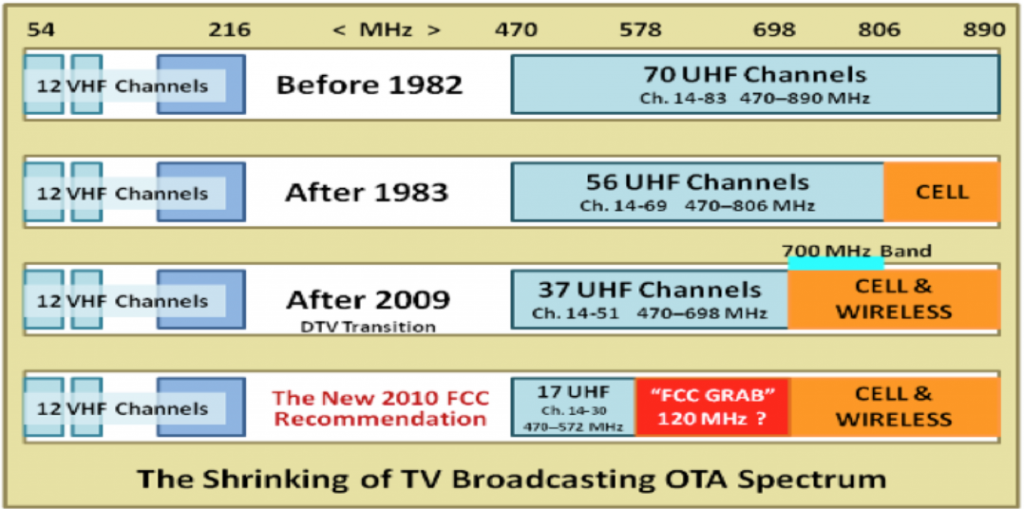There are always pros and cons to using wireless on any type of device for both pastors and worship leaders and it’s one of the most common questions I get. In this article, I’ll show you great examples of when a wired device (microphone or in-ear monitor) is a better choice over wireless and when wireless would be the better choice.
When to Use Wireless
The freedom to roam is the primary reason to employ a wireless system. If this is a necessary element of the application, a wireless device has to be considered. However before choosing a wireless over wired system, have you considered the microphone choice?
Will you need a hand-held vocal, lapel, and headworn microphone for the pastor or body pack and cable for the guitarist? What type of microphone will be required, a moving -coil (Dynamic) or a condenser?
What polar pattern or pick-up pattern is called for (Check this guide)? The microphone that might be best suited for your application may not be available in a wireless version. So let’s choose the appropriate microphone first.
If the one using the microphone or in-ear monitor is stationary, is there a compelling reason to use a wireless? The keyboard player or drummer are typically sitting or standing in the same place so your church could save a lot of money by using a wired device.
Do you really want all of your background vocalists each having their own wireless microphone? You may want to consider making them into a small choir and applying a wired microphone or two for the group or individual wired microphones on stands might be another solution.
I’ve seen worship leaders with a wireless microphones standing motionless in front of their floor monitor. Are they really able to move in this scenario? Not really, as they’re basically tethered to the wedge in order hear the mix.
If you want the talent to be mobile, complete the circle by making everything wireless. Give them wireless in-ear monitors, wireless guitar and wireless microphones. Now they can move wherever they need to while playing, singing and hearing their mix.
Speed and Efficiency in Set-Up is often used as a valid reason to use wireless systems. It saves a lot of time when you connect the wireless rack to your mixer and hand out the transmitters and you’re ready to rock. Not having to cable everything or uncoil /coil a snake, as in portable church set-ups and teardowns is very efficient. However, have you thought about the time required to install new or freshly charged batteries, finding frequencies that work, and setting up the antennae. There are additional things to think about, now more than ever, if you decide on using a wireless system. Turning on a wireless system (especially an analog one) and having it work properly will require some homework, so be prepared. Manufacturers are researching and developing wireless systems that will work outside of these TV bands. The System 10 technology by Audio-Technica would be a great example of a type of technology that is sonically pure, easy to set up and affordable for the smallest of churches.
Aesthetics. Nobody wants to see the cables, or trip over them. Clean stages are nice to look at and safe. Again, if this is a reason to go wireless, it’s not the best reason as you can hide cables. Tape them down with carpet-matching gaff tape. There are many ways to address this. It might take some work but spending hundreds of dollars more to not see the wires doesn’t make much sense to me.
If you find yourself needing a microphone while standing in a baptism pool, use a wireless microphone just in case there is current in the water from a faulty ground. I don’t know of anybody who has been electrocuted when using a wireless microphone.
So what advantages do wired microphones offer?
- Fidelity: Many times they will sound better. Analog Wireless systems employ a process known as companding and affect the fidelity, especially in the low frequencies, which is why many bass players don’t like to use wireless. Digital wireless is different and doesn’t need to compress and expand the signal on a radio wave. It’s much closer to a “wired” sound. So I will concur that digital wireless can sound as good as a wired microphone.
- Wider selection: Not every microphone that you may want/need is available in a wireless format.
- Reliability: It’s on a wire, a direct connection. Unless the wire is bad, you’re going to get a solid connection to the system.
Other considerations:
- Can the transmitter see the receiver antenna?
- Did we replace the old batteries with fresh alkaline or recently charged rechargeable ones?
- Are the receivers adjacent to digital devices (computers, DVD players, digital reverbs, etc) which can affect the signal adversely?
- Are the wireless frequencies coordinated properly with local TV stations and other wireless systems (Assisted Listening devices, intercom, etc) at your location?
Can you think of other devices that just work better when they are directly wired? Does your computer function better when wired to modem or with Wi-Fi? Does a TV have better reception with cable or a dish? Does your cell phone ever drop calls?
- Expense: the wireless version could cost two, to three times more than the same brand/model of a wired device at a minimum. Save your money, be a good steward and you’ll have more to spend on quality microphones and more of them. You also have to consider the recurring cost of replacing old batteries with new alkaline or re-chargeable, although rechargeables have come a long way and could save you hundreds of dollars a year. (A company that manufactures the best re-chargeable in my opinion is Ansmann, distributed by Horizon Battery) .
If you still intend on using wireless systems after considering what I’ve said at least choose the systems that will require less frustration and sound great. Our own Federal Communications Commission has been selling off TV Band spectrum, (the frequencies that we, as wireless users have had access to for years) to private telecommunications entities. You remember the 700MHz sale and how it made some of our wireless devices illegal? Now the 600 MHz band will be auctioned beginning this year. I don’t know what the ramifications of that will be completely but suffice it to say, it’s not going to be any easier to find frequencies to use.

Manufacturers have been researching and developing technologies that will work in this ever changing landscape. Digital wireless is coming of age. Not all digital wireless systems are equal or deliver the same quality so do due diligence when researching how these systems operate. One thing that holds true for most of them is that they operate outside of the TV bands. Coordination is simplified, almost like pairing a Bluetooth device and can be easily added to your existing wireless systems without having to re-coordinate. The sonics in many of them rival wired systems because they are transmitting digital 1s and 0s. There is no companding per se: pure digital audio, 24 bit/48KHz, and 20-20KHz response. Line of sight may be more of an issue so make sure that your transmitters can see the receivers. Many of them are affordable so that even the smallest of churches can afford them.
Hopefully this has given you some things to think about. Determine what the best option is for every application. Wireless or wired, they both have their advantages just be sure that you are employing the right type to your application. If you have any questions give me a shout. Be blessed!

